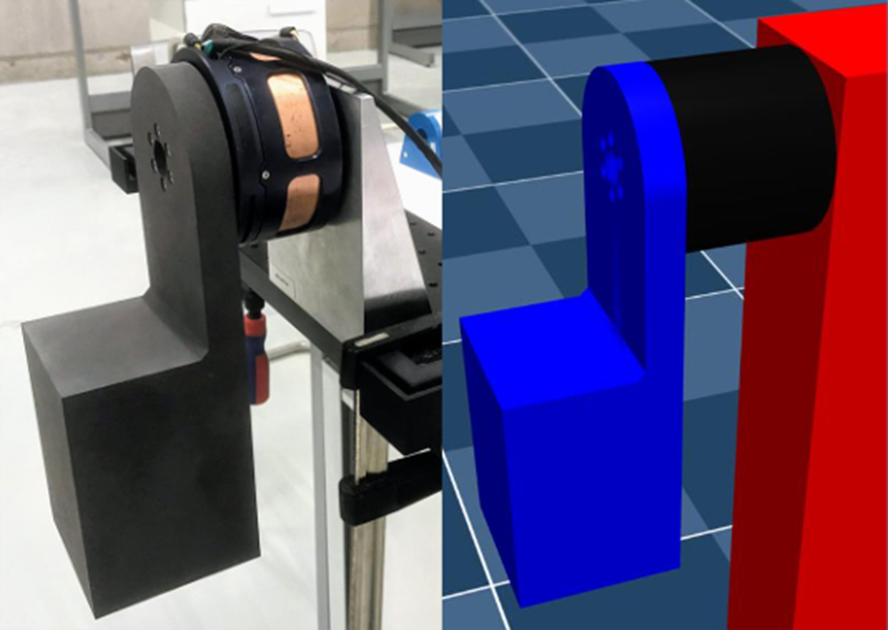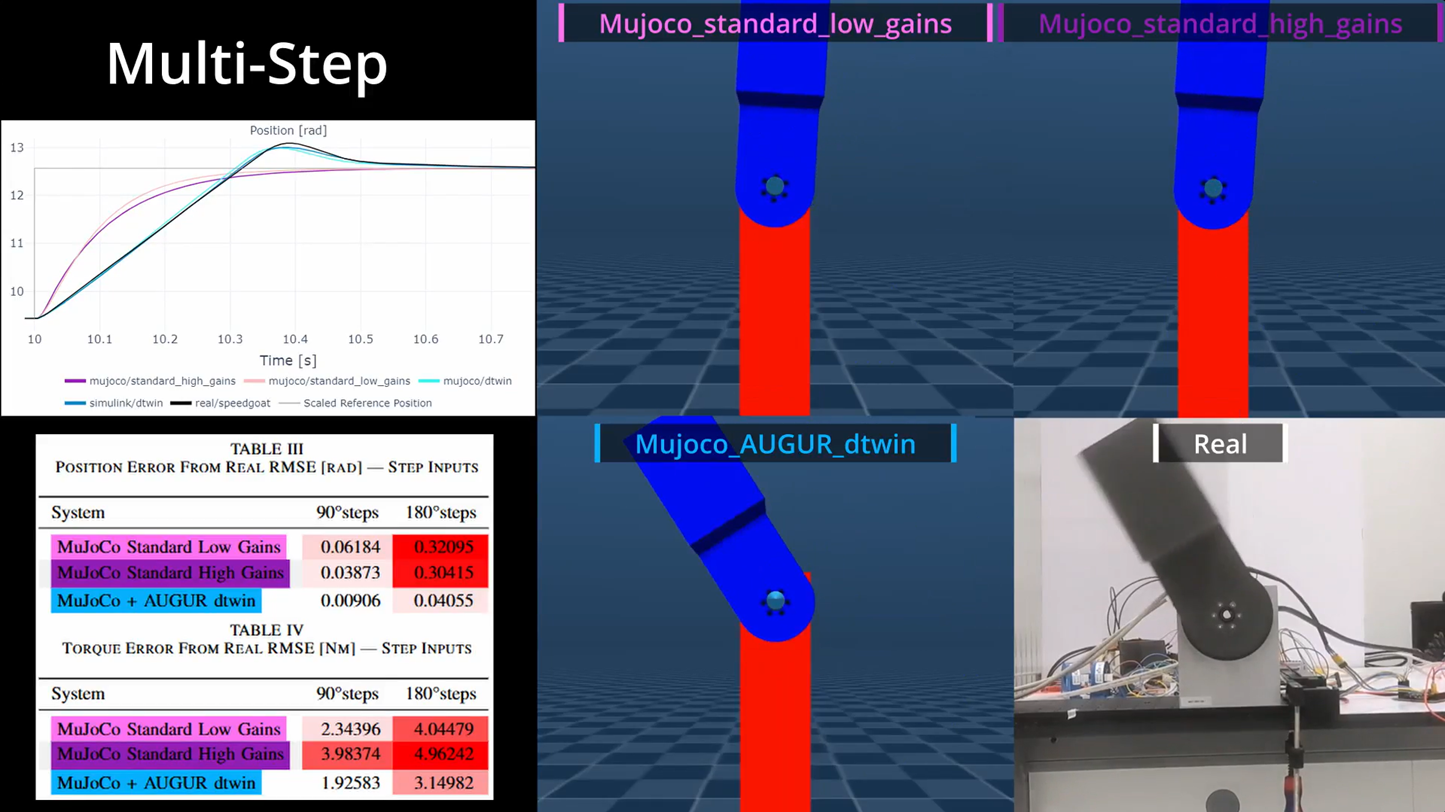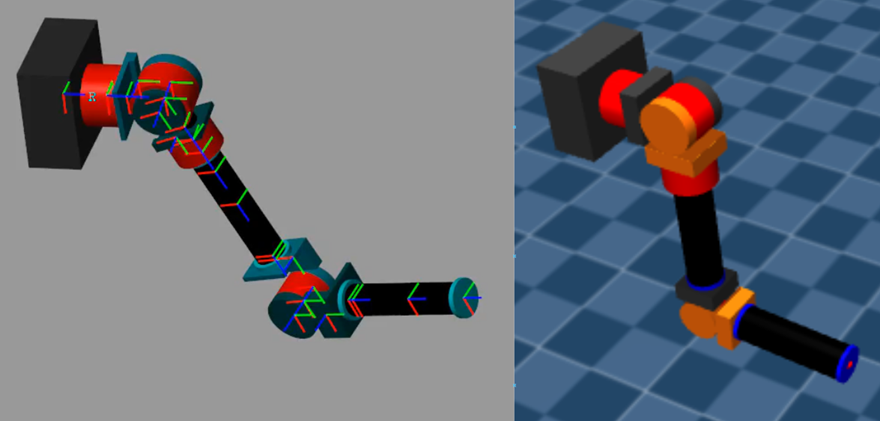AUGUR: A Digital Twin Ecosystem
Introduction
AUGUR is PULSAR’s digital twin framework—engineered to bring robotic simulation closer to reality than ever before. At its core, AUGUR is a physics-based, actuator-level digital twin that captures the true dynamics of PULSE actuators, including motor physics, gearbox friction and dynamics, current and torque limits, embedded control loops, and sensor noise.
Unlike conventional simplified models, which often break down outside of narrow operating conditions, AUGUR faithfully reproduces both steady-state behavior and transient responses across a wide range of loads, gains, and trajectories. This means simulations no longer rely on fragile tuning or optimistic assumptions; they reflect the behavior of the hardware itself.
What makes AUGUR unique is its balance of fidelity and efficiency. Built for integration with robotic simulation environments like MuJoCo, AUGUR runs faster than real time on standard laptops, enabling large-scale training and validation without sacrificing accuracy. From 1-DOF characterisation tests to multi-DOF kinematic chains, AUGUR consistently narrows the sim-to-real gap, empowering developers to design, test, and optimize with confidence.
With AUGUR, roboticists gain:
- High-fidelity actuation: Embedded control logic and sensor artifacts are modeled at 10 kHz, just like the real hardware.
- Scalable integration: Drop-in compatibility with URDF-based systems makes it easy to simulate new robots.
- Predictive simulation: Policies, controllers, and trajectories validated in simulation transfer more reliably to the real world.
- Real-time performance: Faster-than-real-time operation supports simulation-based robotic development.
In short, AUGUR transforms simulation into a trustworthy mirror of reality; a vital tool for accelerating humanoid robotics, safe deployment, and advanced control research.
Realistic Simulation, Proven Across Scales
AUGUR brings predictive accuracy and scalability to robotic simulation by modeling PULSAR actuators as they behave in the real world. Unlike simplified models, which often fail under changing conditions, AUGUR captures the full physics of PULSAR actuators, simulating internal parameters of motors (also from PULSAR), friction, saturation, sensors, and embedded control loops, delivering simulations that remain trustworthy across tasks, loads, and speeds.
The following use cases highlight AUGUR’s versatility: from validating a single actuator against experimental data to scaling up to multi-joint humanoid arms while running faster than real time.
Use Case 1: Simulation of a Virtual Actuator with Experimental Validation
One of the core demonstrations of AUGUR is its ability to act as a virtual replica of a real actuator and match experimental results with high fidelity.

To test this, PULSAR’s PULSE115 actuator was mounted on a simple 1-DOF pendulum setup.
The experiment compared three systems side by side:
- The real actuator driving the pendulum in hardware.
- The AUGUR digital twin embedded in simulation (MuJoCo).
- A simplified actuator model commonly used in physics engines such as MuJoCo.
The test involved challenging trajectories, from smooth ramps to aggressive multi-step motions, executed under different load conditions.
Results:
- The simplified model quickly diverged from reality, especially under high-dynamic conditions.
For example, it failed to capture the large overshoot observed in the real actuator during fast step responses. - The AUGUR twin, however, reproduced both position and torque dynamics with remarkable accuracy across all scenarios, showing errors an order of magnitude lower than simplified models.
- Even under extreme trajectories, AUGUR maintained stability and realism, while simplified models produced non-physical results (e.g., torque spikes approaching actuator limits).

Impact: This validation proves that AUGUR can
faithfully mirror real actuator behavior, including subtle effects from embedded control loops, saturation limits, and sensor noise.
For roboticists, this means simulation results are not just approximations—they are predictive of what will happen on hardware.
In practice, AUGUR enables:
- Accurate pre-deployment testing without risking physical hardware.
- Reliable design validation, ensuring actuators are sized and tuned correctly before prototypes are built.
- Trustworthy control algorithm development, where the same gains used in simulation can be deployed directly on the real system.
Use Case 2: Scalable Simulation in a Multi-DOF Humanoid Arm
After validating AUGUR at the single-actuator level, the next challenge was to test its scalability in a robotic system with multiple interacting joints. To do this, researchers integrated AUGUR into a 4-DOF humanoid arm composed of a 3-DOF shoulder and 1-DOF elbow.

The arm was tasked with executing end-effector trajectories in task space
(moving along straight lines between waypoints under varying speeds: from slow, precise motions
to rapid, aggressive ones). The same low-level control logic implemented in real hardware was embedded in AUGUR,
ensuring that the digital twin carried the same dynamics into simulation.
Results:
- The humanoid arm tracked task-space trajectories with high accuracy and stability, even during fast motions.
- Using standardized ISO 9283 robotics metrics, AUGUR demonstrated excellent path accuracy and
positioning precision, showing behavior consistent with what real hardware would deliver. - Despite its detailed modeling of actuator physics, the full 4-actuator twin ran faster than real time:
a 41-second motion sequence was simulated in just over 6 seconds on a standard laptop.
Impact: This experiment demonstrated that AUGUR is not just a single-actuator tool, it can scale to
complex robotic systems while preserving real-time efficiency.
This capability is crucial for humanoid robotics, where 30+ actuators must be simulated in coordination.
For developers, this means AUGUR can:
- Serve as a platform for humanoid design iteration, testing how actuators and joints interact under realistic loads.
- Enable safe, accelerated training for reinforcement learning and model predictive control, thanks to faster-than-real-time simulation.
- Support hardware-in-the-loop experiments, where virtual and real actuators work together for testing advanced controllers.
By scaling from a single actuator to coordinated humanoid limbs, AUGUR proves its role as a
generalizable digital twin framework, bringing predictive, high-fidelity simulation
to the next generation of robotic systems.


